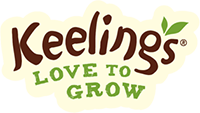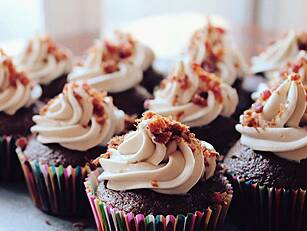Keelings are asking you to get green-fingered and grow your own wildflower garden for the bees!
Keelings love to grow, and produce over 200 million strawberries a year on their farm in North Dublin, along with blueberries, raspberries, blackberries and apples!
However, their hard work can't be done without the help of some pollinator friends, especially the bees.
Bees are by far the most important pollinators in Ireland. We have 97 native bee species, but their numbers have declined by over 50% because of things like urbanisation, habitat loss and pesticides. Bess and other pollinators are a vital part of our ecosystem, so it's important we do our part to reverse the declining population.
That's where you can help with the Keelings Great Rewilding!
View this post on Instagram
Simply pick up a special punnet of Keelings berries with the Great Rewilding label to get your free packet of seeds. The goal is to help sow 250 million native Irish wildflower seeds on the isle of Ireland this summer.
Encouraging wildflowers to grow locally is a small thing we can do to make a big difference. Whether you have just a few window boxes, a full garden, or are involved in a community garden, there are loads of actions you can take to be part of the rewilding journey.
Below are some ways you can join in and grow this Summer.
Create a rewilding zone
A simple way that you can create a Rewilding Zone in your garden is by taking a break from mowing your lawn. This allows wildflowers to grow naturally!
Mowing only once a year will create a rich, long-flowering meadow. You can expect to see plants such as Oxeye Daisy, Vetches, Devils-Bit-Scabious and Knapweed.
As your garden transforms into a colourful wildflower meadow, you will help to provide a healthy pitstop of food and shelter for all pollinators.
When cutting your grass annually, let the cuttings lie for a few days to allow any seeds to drop.
View this post on Instagram
Grow pollinator friendly plants
Incorporating some pollinator-friendly plants in window boxes, hanging baskets or other containers can be done in any garden, but it’s particularly useful for homes with little outdoor space.
During summer, there is usually plenty of flowers providing food for pollinators; however, in Spring and Autumn, it is equally important to have food available for them.
It's a fun way to teach little hands and to see flowers blooming all year round. Here's some suggestions to start your own:
- Annuals for window boxes: Sweet Alyssum, Poached Egg Plant
- Perennials for window boxes: Aubrieta, Bellflowers, Verbena
- Herbs for pots: Borage, Chives, Lavender, Rosemary, Sage, Thyme
Build an insect hotel
There are many ways to create nesting habitats for Irish solitary mining bees and Irish solitary cavity bees, and building a home for them can be great fun for all the family!
Use any south or east-facing wooden fencing to drill holes for solitary bees to nest in. These holes should be 10cm deep, range from 4-8mm in diameter and be at a height of at least 1.5-2m. Or, you could build or purchase a bee hotel.
Irish solitary mining bees like to burrow into the soil. To help them simply scrape away some grass in flat, sunny spots in your garden to create areas for these bees to nest.
View this post on Instagram
Pollinators are so important on the Keelings farm. They are essential to support growing top-quality fruit.
They also play a huge part in maintaining a farm biodiversity, and Keelings mind their farm’s natural habitats to ensure its sustainability.
So pick up your punnet of Keelings berries, claim your free seeds and be part of the great rewilding journey this Summer.
For more information visit keelingsgreatrewidling.ie
View this post on Instagram















